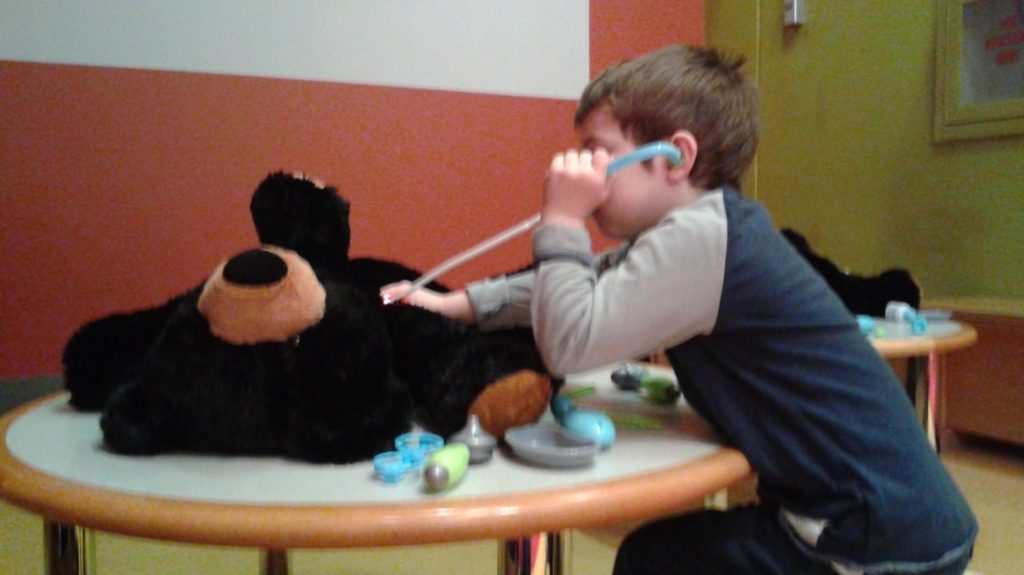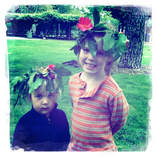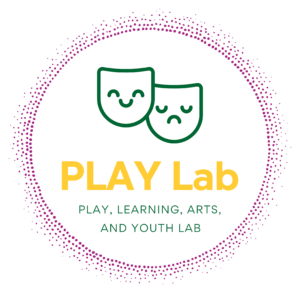CURRENT RESEARCH

The Play, Learning, Arts, and Youth Lab conducts research that is both PI-driven and student-driven. Our work mainly investigates the social and emotional outcomes of engaging in a variety of artistic, playful, and imaginative activities with typically developing children and adolescents. However, we have previously collaborated and expanded this work into cognitive and academic outcomes, Autistic children, children with different abilities, and all ages from preschool through adulthood.
Current Study: Believing and Disbelieving in Santa Claus Belief
Together with Dr. Candice Mills, we are investigating a variety of questions around belief, disbelief, lying, and play around Santa Claus and other characters such as the Easter Bunny and Tooth Fairy. This work was generously funded by The John Templeton Foundation through a grant by Wake Forest University Science of Honesty Project. We are investigating how and why parents lie to their children about Santa, what kinds of experiences they provide, how mass media teaches children about Santa, and whena nd how children come to skepticism around the Santa Claus myth.

Current Study: Longitudinal and Effects of a First Theatrical Experience for Elementary School Aged Children
In partnership with Shakespeare Theatre Center and the Pinecrest School, we are investigating the effects of a first theatre experience for children in grades K-6. Using a mixed methods approach, we are conducting focus groups with children, and collecting administrative and survey data from teachers and parents to ask which Acting Habits of Mind (Goldstein, 2024) children are most engaging with in their performance classes at this age, how they feel about their acting classes, and outcomes across academic and social-emotional skills.
Study: Engagement in Moral Narratives and Religiosity
Led by PhD student Sofie Caruso, we conducted and analyzed a study where we had participants write narrative responses to non-moral and morally deviant prompts to examine moral imagination in regards to narratives and if there is a relationship between moral imaginative engagement and religiosity. Moral imagination is defined as imaginatively engaging in moral subjectivism when confronted by a novel moral situation. Its inverse construct imaginative resistance, defined as resistance engaging in a work, negatively correlates to imagining a subjective moral world (Black & Barnes, 2020). We explore the relationship between religiosity and engagement in moral imagination through having 518 participants complete moral and non-moral permissibility measures and create a narrative world for a morally-deviant and non-moral prompt. Results suggest that while religiosity may act as a moderator for non-narrative moral imagination tasks, it may not constrain moral imagination in the more active demand of creating a narrative.
Study: Composer Intent and Character on Musical Enjoyment
Led by PhD student Sofie Caruso, this study examined if knowledge about a composer’s intent when writing a piece or the quality of their character impacted participants enjoyment and engagement of the piece. Participants were randomly assigned to read a paragraph dealing intent and composer character in a 2X2 study design of sexist/neutral intent and sexist/neutral character. Results are being analyzed.
Completed Study: Kids, Creativity, and Video Games
Led by recently awarded PhD student Darian Stapleton, we have recently completed an online survey about how children understand creativity in video games. Research on video games typically focuses on adolescents and young adults, and on the possible negative effects of gaming. However, ever younger children are given access to video games, making research with these younger age groups necessary, particularly as games may start to replace activities such as pretend play. Our study approached the question of how video games for younger children may prime cognitive creativity after playing, as well as how children conceptualize creativity within video games. In study 1, children played one of two video games (Minecraft, with no plot or mission, or Dragon Quest Builders, which contains both) and provided several open-ended responses about their creativity in the game. Participants then completed a cognitive creativity task. In study 2, shortened video clips of children’s gameplay in Minecraft from study 1 were shown to a separate group of children, ages 7 – 15 online. Children were asked about their prior experiences with video games, they rated the creativity of the Minecraft videos, and they explained each of their ratings. Results show that children with more gaming experience rated gameplay significantly lower for creativity than those with less experience, and that gameplay focused on building something was rated significantly higher for creativity than other types of gameplay.
Completed Study: Dance Experience and Social Understanding
Many children take extracurricular dance classes and/or play sports. Children also are experiencing rapid and malleable development of their social cognitive skills. Led by PhD graduate Megan Stutesman, we are currently examining children’s participation in dance classes and sports (i.e., soccer) to investigate the effects of these activities on development of the critical social cognitive skill, theory of mind. Theory of mind is the ability to understand or “read” what someone else is thinking or feeling based on their facial and bodily expression. The study is mixed methods and longitudinal and follows children (aged 7-12 years old) over one academic year of dance or soccer participation. We have recently completed quantitative and qualitative data collection with children, parents, and teachers. Results are forthcoming. especially important considering both the rapid development and the malleability of social cognitive skills in childhood and the widespread childhood engagement in dance and soccer.
Completed Study: Embodied Emotion Expertise and Social Cognition
Led by PhD graduate Megan Stutesman, we have recently completed a study examining how experience in bodily expression (i.e., dance) impacts our ability to understand other’s nonverbally expressed thoughts and feelings. A group of trained dancers with at least ten years of consistent dance training was compared to a control group with less than one year of dance training on measures of affective theory of mind. Affective theory of mind refers to the ability to correctly interpret another’s emotional state. Participants watched video clip stimuli of bodily expressed emotional states and facially expressed emotional states and responded to multiple choice questions after each video to indicate how they thought the person in the video was feeling. Results demonstrated that those with bodily expression training, dancers, were better at affective theory of mind for both facially and bodily expressed emotions than those without dance training.
Review: A Systematic Review of Psychology of the Arts Methodology and an Argument for Mixed Methods
Psychologists uses multiple different approaches to answer questions. The primary methodological approaches usually fall into three categories: quantitative methods (e.g., numbers), qualitative methods (e.g., words), and mixed methods (e.g., an intentional mixture of qualitative and quantitative methods). However, these methods may not be employed uniformly or equally across psychological topic domains. In this study, led by PhD graduate Megan Stutesman, we are systematically coding all articles published in the journal Psychology of Creativity, Aesthetics, and the Arts, from the journal’s inception in 2006 to present) for their methodology type. Coding is complete and final results are forthcoming, but preliminary results indicate a strong methodological bias towards quantitative methodology. In this paper, we will report the methodological trends in the field, make an argument for why mixed methods studies may be especially useful to study psychology of the arts topics, and present and overview of the key features of mixed methods studies.
Study: Emotion Communication and Dance
Dance has been a prominent component of human societies since our Neanderthal ancestors and is often used to communicate emotions. In this study, led by PhD graduate Megan Stutesman, we asked what features of dance allow it to be used for emotion communication? We began with an exploratory qualitative study that interviewed professional dance teachers, performers, and choreographers. Qualitative analysis revealed four primary thematic elements of dance that uphold its emotion communication use: social interaction, narrative or storyline, emotion communication intent, and textural qualities of movement. We then quantitatively tested how the emotion communication intent and storyline elements effected emotion communication from dance using video stimuli that manipulated these elements and found that the explicit intention to communicate emotion is important for emotion to be accurately perceived by viewers. Counter to the qualitative data, we also found that dance with storylines did not lead to better emotion communication, which we hypothesize is due to viewers imposing their own narratives on the movement.
Study: Moral Imaginative Resistance in Preschooler’s Pretend Play
Led by Sofie Caruso, we examined if children ages 4-6 years old display a resistance to engaging in pretend play based on the actions in the pretense were moral or immoral, and if the immoral actions were by the participant or another child. This study was conducted in local parks. Children completed a card sort with 24 moral and immoral play scenarios differing in who the moral agent was (child or other). The participants were then asked to actually go and play one of the scenarios for up to 10 minutes before returning for questions on their play and a questionnaire for moral evaluations across real and pretend situations. All of the data has been collected and is in the process of being transcribed and analyzed.

